-
Posts
15,147 -
Joined
-
Last visited
Content Type
Profiles
Forums
Store
Help Articles
Posts posted by liuzhou
-
-
If you are a lamb lover like me, choose better than me where you live. Lamb is popular in the north, particularly Inner Mongolia, and in the west of the country; much less so in the South and east where people often consider it to have an off-putting, rank smell.
It is usually known as 羊肉 (yáng ròu) but that term also includes mutton and goat. To be more sure of getting lamb and not some elderly sheep, you can try using 羊羔 (yáng gāo) or 小羊 (xiǎo yáng). If you see 山羊肉 (shān yáng ròu, literally mountain sheep meat), you've found goat - fine meat in my opinion.
Then you have the butchery problem. You're not going to find neatly trimmed lamb chops or beautifully frenched racks of lamb.
Chinese butchery is a less precise art. Here are images of what is available here in winter (lamb disappears here in the south in summer).
Lamb is often used in Mongolian style hotpot and the feet, heads and assorted bones are sold for making stocks.
Paper thin, fatty lamb rolls, 羊肉卷 (yáng ròu juǎn) are sold to be dropped into the hotpot where they cook in seconds. In many supermarkets, this is the only lamb on offer.
Elsewhere you may find 羊排 (yáng pái) which is listed in some dictionaries as 'lamb chops' but usually comes as a row (排) of undressed lamb ribs. Any additional butchery you're going to have to do yourself.
Meaty legs of lamb are available in winter. The whole legs come with skin and bone. The supermarket butchery section will chop it for you on request.
Only recently I've been able to source boneless, skinless leg meat and very good it is, too.
Despite the usual disdain for the meat, lamb skewers are popular in every evening food street and pre-assembled sticks are available laced with cubes of meat interspersed with tail fat for home grilling.
I've never been able to find my favourite cut, breast of lamb here in China 😡
Goat comes in the same cuts.
I should note that lamb is expensive here. Around double or more the price of pork. Goat is even more.
-
 2
2
-
-
Breakfast this morning was a roujiamo made from what I didn't eat for dinner last night.
https://forums.egullet.org/topic/166082-dinner-2024/?do=findComment&comment=2416803
Accompanied by a nice cup of Bovril, innit? Sorted.
-
 1
1
-
 1
1
-
-
Speaking of hotpot (S: 火锅; T: 火鍋 - huǒ guō, literally 'fire pot'), we have to consider the base. Obviously, you can make your own from some good stock. I always do. But there is an alternate route.
Supermarkets all carry these instant 'just add water' hotpot base mixes - S: 火锅底料; T: 火鍋底料 (huǒ guō dǐ liào).
Although, I've never used them, I have eaten them in friend's homes and they aren't bad.
They come in various flavours. Here are just a handful.
This is the most popular round here. It is a Sichuan type proudly stating that it uses beef tallow - 牛油 (niú yóu)* as is traditional in Sichuan. It is also heavily spiced with chilli and Sichuan peppercorns.
They also do this equally spicy version without the beef fat.
For the chilli averse or for half of a S: 鸳鸯; Trad. 鴛鴦 (yuān yang) double sided pot, there is also this unspiced mushroom base.
The Little Sheep restaurant chain, originally Inner Mongolian but now owned by Yum! Foods, owners of KFC, Pizza Hut etc., also sells a range of base mixes.These are available from Amazon. I've never tried them so I can't comment on how good they may be. I have eaten in the restaurants (pre-takeover) and the hotpots were good then.
Here is a small selection from their range.
* Ignore the self-proclaimed hotpot expert who on her website mis-translated this as 'butter' then went on at length about the wonderful buttery flavour of Sichuan and Chongqing hotpots. Butter is never used Chinese cuisine, never mind in hotpot!
-
 1
1
-
-
10 minutes ago, KennethT said:
That's odd. Part of the reason for making hot pot is the community - who makes hot pot for 1 person? If I wanted the flavors of hot pot, I'd make a dry pot, in which case, the super thin slices would disintegrate almost immediately - it would be better to use larger pieces as in any other stir fry.
I agree but hotpot is in the locals' DNA and the itch needs scratching in the cold months. A pot of hotpot base will last for days, with new ingredients being added each meal.
I have made myself hotpots in the past, but never from these packs.
-
 1
1
-
-
I never really understood this. Very few people live alone here, yet many supermarkets and delivery services offer 一人 (yī rén), one person amounts of ingredients for dishes.
Right now, is hotpot season and so they are selling single portions of suitable ingredients like this.
Paper thin beef slices in rolls, meat balls and green vegetable.
That can be supplemented by this selection of seasonal produce.
They do not charge a premium for the service.-
 2
2
-
-
I got myself 300 grams of roasted beans from Yunnan Academy of Agricultural Sciences. They are described as Yunnan Small Grain Coffee Beans. I'd say a medium roast.
I ground them to a medium fine powder and had a very pleasant mellow brew for breakfast. Again, I have to say they remind me very much of Vietnamese coffee. Not surprisingly.
With the right backing, which seems in place, they could become a major player in the near future.
-
 2
2
-
-
-
Is your S: 叉烧; T: 叉燒 (chā shāo) underperforming or too sweet? Not getting the glaze you prefer on your S: 北京烤鸭; T; 北京烤鴨 (běi jīng kǎo yā)?
What you need is the not-so-secret ingredient S: 麦芽糖; T: 麥芽糖 (mài yá táng).
S: 叉烧; T: 叉燒 (chā shāo), literally 'fork roast', is the Mandarin for what most know by the Cantonese name char siu.
S: 北京烤鸭; T; 北京烤鴨 (běi jīng kǎo yā) is, of course, Beijing Duck.
And the 'secret ingredient' S: 麦芽糖; T: 麥芽糖 (mài yá táng) is maltose.
Image from Meituan online shopping app
Maltose, my dictionary tells me, is a disaccaride formed when starch is broken down by enzyme action.
Maltose, my kitchen tells me, is that jar of incredibly sticky stuff I bought in the supermarket.
Almost solid at room temperature, maltose is about one-third as sweet as sucrose (regular sugar) but up to ten times stickier. Due to its viscosity, it sticks better to the meat than the usual substitute, honey and also tastes less sweet, a good thing in my view.
This maltose is made from rice and its thick sticky consistency makes it almost impossible to spoon out of the jar or brush onto your meat. However, it is the traditional ingredient used to get the perfect glaze.
The trick is to microwave the stuff for around 20 to 30 seconds to 'melt' the top enough to get the stuff out. BE CAREFUL! Like all sugars, it gets very hot and retains its heat longer than one might expect. Working with maltose is one of only two occasions I wear gloves in the kitchen. Also, coating your spoon with a little cooking oil helps with getting the stuff off the spoon and into a bowl.

Maltose is available from Amazon, but probably considerably cheaper in Asian markets, should you have access to such a thing.
-
 1
1
-
-
The great Chinese potato mystery mentioned before is somewhat topical.
Every year, around now these turn up in the markets and supermarkets. They are the egg-sized tubers of a flowering plant, Sagittaria sagittifolia, sometimes known as arrowhead because of the shape of its leaves. In Chinese they are 慈菇 cí gū.
These were also a staple of Native Americans and known to the Cree as 'wapatowa' meaning 'white mushroom'. Later the name was applied as 'wapattoo' by the Chinook to potatoes which may account for the name confusion in early American cookbooks.
Interestingly, the gū part of the Chinese name also means 'mushroom'. The mystery is still partially unsolved.
In China, they are traditionally eaten at Chinese New Year (Spring Festival), usually in hot pots. I use them in beef casseroles etc.
They taste fairly bland but are starchy like potatoes, though they remain crunchy even after cooking. Peel them and stew / boil for around 20 minutes. Alternatively they are excellent when roasted.
-
 1
1
-
-
Just now, Dr. Teeth said:
I mostly cook greens. Yes, in pork fat on your recommendation. Is it commonly used with greens? If so, any in particular?
Yes. It is. Any greens. I used a little with some spinach this lunchtime.
-
9 minutes ago, Dr. Teeth said:
But it’s a large canister. And large canisters that don’t get used irritate Mrs Dr Teeth. You reference its use in stir fry. Any more specifics on how to incorporate it?
In a stir fry, a teaspoon or two is simply added like you might add salt. It dissolves in whatever liquid element there may be. I wouldn't add it to a particularly dry stir fry but few are.
-
 1
1
-
-
This time, I'm looking at Worcestershire sauce. You're probably wondering if I am completely losing the plot. This is meant to be about Chinese ingredients – what are you doing wittering on about classic English delicacies?
Well, it may surprise you but Worcestershire Sauce is very popular in parts of China, particularly Shanghai and Hong Kong.
Lea and Perrins' accidental invention was introduced to Shanghai by the British back in the 1920s and the locals took to it, adapting it into their dipping sauces. Then they decoded the recipe and, 1930 started producing it themselves. The most popular brand in Shanghai is, no surprise, Shanghai Worcestershire Sauce. But the original Lea and Perrin's version is also available, imported via Hong Kong, I guess.
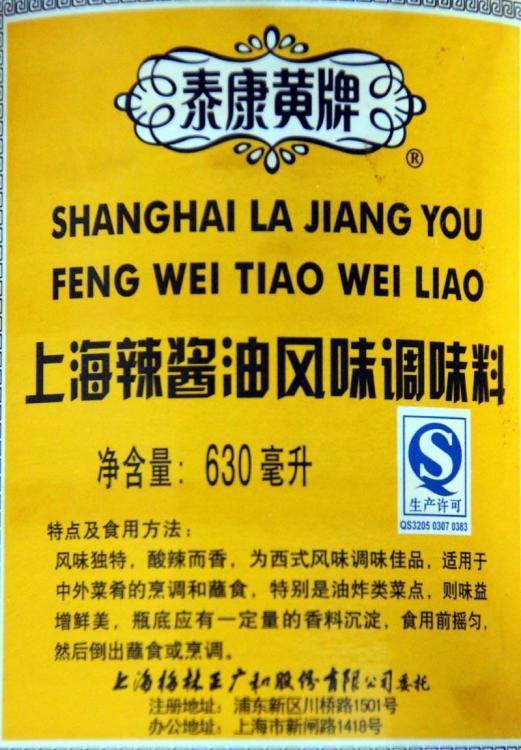
It is known in Chinese as S: 辣酱油;T: 辣醬油 - là jiàng yóu, which leads to some confusion, as 酱油 is also used to refer to soy sauce. This product contains no soy. In fact, 酱油 just means 'sauce', but the ubiquity of soy sauce in China has lead to the name almost being appropriated by just one sauce.
The Shanghai version is slightly spicier and less sweet than Lea & Perrins’ original.
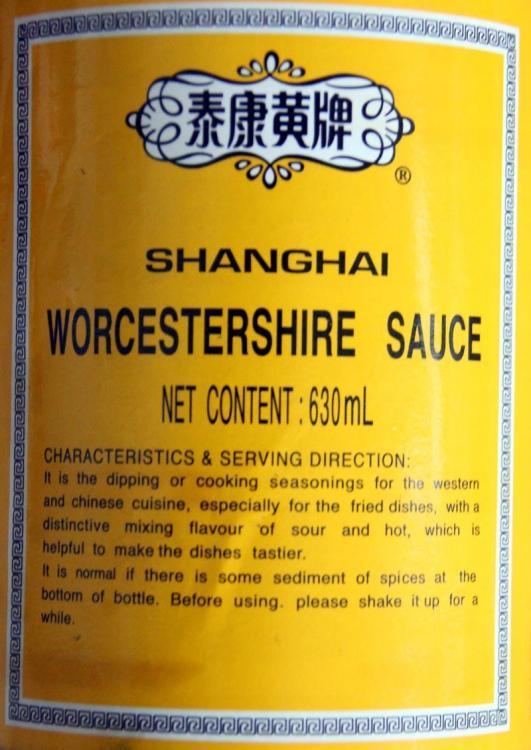
The English on the bottle lists the ingredients as water, sugar, spices, salt, tomato paste, food additives (acetic acid, caramel).
The Chinese ingredients list is more forthcoming, adding dried chilli, onion, mustard seeds, tangerine peel, cape jasmine and bamboo shoot to the list.
Note the lack of anchovies, the main ingredient in the original.
In Shanghai, it is mainly used with fried, bread-crumbed pork chops or as a dipping sauce for 生煎包 (shēng jiān bāo) aka 生煎馒头 (shēng jiān mán tou) fried soup dumplings – a popular breakfast item.
PS. I've never met anyone outside Britain who can actually pronounce Worcestershire Sauce properly. The Chinese don't even try.
P. G. Woodhouse drops a huge clue, doesn't he Bertie?
-
 1
1
-
-
Then we have what I call the condiment oils and flavoured oils. That is oils which are used in cooking, but as a flavour component rather than a cooking medium.
First and foremost is sesame oil (芝麻油 - zhī ma yóu or 香油 - xiāng yóu), one of the essential components of Chinese cuisine.
This is pressed from roasted sesame seeds and has a strong flavour. It is not used for frying in Chinese cuisine (the taste is too strong). Instead, it is used as a last minute addition to stir fries, a little being applied, off the heat, just before serving.
The oils valued for its flavour and aroma, both of which are highly volatile and are destroyed by heat. Many recipes call for it to be used in marinades for dishes which are then cooked at high heat. Follow these if you like throwing money away.
Sesame oil is widely available from supermarkets, market stalls and corner shops.
Oil from un-roasted sesame seeds, used for frying in southern India, seeds is not a suitable substitute for Chinese cuisine.
Now, from the ubiquitous to the rare. Bama county, a short distance to the west of Liuzhou, is home to members of the Yao ethnic minority, many of whom live extraordinarily long lives. One key ingredient in their cuisine is a soup made using hemp oil (大麻油 - dà ma yóu), which is none other than cannabis oil.
This soup is eaten twice a day. The oil can also be used in a dip.
Note that the oil contains merely trace amounts of Tetrahydrocannabinol (THC), the psychoactive substance found in the cannabis plant. It won't get you stoned! I know. I've tried.
Next up is the fiery essential in Sichuan cooking, chilli oil (辣椒油 - là jiāo yóu, or S:红油; T: 紅油 - hóng yóu, literally 'red oil'.).
This is made by steeping dried chilli flakes in peanut or corn oil for a few days. It is used in Sichuan hotpots and soups, dips and as a general condiment on stir fries etc. If you can, try to get a genuine Sichuan brand (红油 is the preferred name in Sichuan.) Again, chilli oil is widely available.
While we are in Sichuan, I should also mention prickly ash oil (花椒油 - huā jiāo yóu), made from regular red Sichuan peppercorns or sometimes vine pepper oil (藤椒油 - téng jiāo yóu) which uses the rarer green variety. This is another condiment oil.
It has that same tongue numbing characteristic as the peppercorns do. Again it is made by steeping the corns in peanut or corn oil. It too is used in hotpots, dips, and on stir fries. Reasonably easy to find in supermarkets, especially in hotpot season.
Yet another edible oil I've run into in Liuzhou is mustard oil (芥菜油 - jiè cài yóu). This is not at all common in Chinese cuisine (although it is in northern India and in Japan).
The bottle shown below is marked 日本风味 (rì běn fēng wèi, meaning Japanese flavour). The oil is pungently flavoured and doesn't match well with Chinese flavours. It is more often used as a skin treatments.
Finally, we have Litsea Oil, 山胡椒油 - shān hú jiāo yóu, or 木姜子油 - mù jiāng zǐ yóu.Made using (Litsea cuceba (Lour.) Pers. ), (山胡椒 - shān hú jiāo, literally mountain pepper; or 木姜子 - mù jiāng zǐ, literally tree ginger seeds.

The seeds grow on small trees in Guizhou and Hunan provinces, as well as in Taiwan. The oil is distinctly lemon scented - like lemongrass - with notes of ginger and a mild pepperiness. The harvest begins in May and lasts all summer.
The oil is often used as a condiment. Fuchsia Dunlop notes in The Food of Sichuan that although it's not Sichuanese, people in the SE of the province like to use it in dips and on the cold dishes that cuisine is famous for.
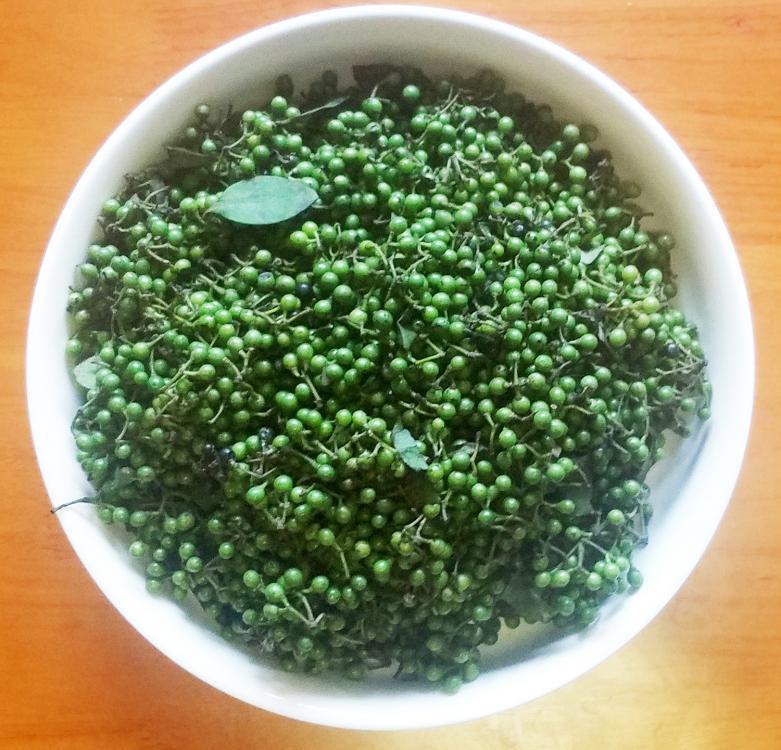
Litsea seeds
-
 3
3
-
 1
1
-
-
It doesn't take long to spot that the locals like a bit of grease with their dinners (and lunches and breakfasts). 75% of dishes are stir fried and stews/ braises / soups etc usually start with a fried base. Even your 'healthy' steamed stuff is often dressed with an oily sauce.
So, what are they using for all these oleaginous offerings?
The number one fat, and the most traditional, is simple lard (pig fat – S:猪油; T: 豬油 - zhū yóu)
Your canny Chinese house spouse will buy a nice fatty piece of pork, render out the fat and use it to stir fry the vegetables, while cooking the meat separately.
I always laugh when I read articles from Chinese food lovers in London or San Francisco rattling on about the healthy way the Chinese steam their vegetables in their bamboos baskets. No they don't! I've never, ever met anyone who used a bamboo basket in a Chinese domestic kitchen. I've only once ever seen them on sale. They are only used in dim sum restaurants or roadside breakfast dumpling shops.
I don't mean that local home cooks don't steam stuff. They do – steamed fish, steamed eggs. But I've rarely seen steamed vegetables – and those only in a few restaurants (usually Cantonese). Veggies are usually cooked in lard. Something for vegetarians to think about when eating out.
I have seen lard on sale in supermarkets, but most home cooks just render it themselves.
To make the lard, the cook trims the fat from the meat and cuts it into roughly even sized cubes. These are placed in a dry wok, initially at a low heat until the first oil is rendered. Then it is just a matter of giving it an occasional stir and draining off the rendered fat from time to time. When the fatty lumps start to brown they are discarded (some friends eat them!)
The newly rendered fat looks a bit unappealing, but after a while in the fridge any impurities tend to sink to the bottom and the fat turns white. The more fastidious could strain it through a fine sieve. The locals wouldn't bother.
.jpg.164f82c7c6bf8a94f11afb8cda6ef8dc.jpg)
Trimmed pork fat
.jpg.0f2104eaafe342cab6272ad3439184bd.jpg)
Chopped pig fat
.jpg.35782b33701e98c993ec0b44b950f513.jpg)
Pig fat in wok
.jpg.05736b631c838a16b8cddba1acb487fa.jpg)
The lard beginning to render out
.jpg.6c497d2471f20d0006ae0a671481145e.jpg)
The cubes on the right have given up all their oil and will be discarded (or eaten).
.jpg.82eae3aea22d6c97d65a4fce4cd7044a.jpg)
Newly rendered lard, still hot.
Beef fat (dripping) is also used in the traditional Sichuan hotpot stock.
It's not so much a Chinese habit, but I regularly do the same with duck fat. But I'm addicted to potatoes cooked in duck fat! The fat from a couple of duck legs renders down to a lot of beautiful fat. It keeps almost forever – at least it would if didn't keep eating it!
Duck fat – chilled
For other cooking, the oil of & round here is peanut / groundnut oil 花生油 - huā shēng yóu. 90% of the oil in every Liuzhou supermarket is peanut oil (although other parts of China have different preferences).
You can even buy it directly from oil producers in back streets who grind the nuts themselves. I wouldn't go near them. You don't want 'gutter oil' – S: 地沟油; T: 地溝油 - dì gōu yóu. This is cooking oil that has been used and discarded, illegally reprocessed and sold back to restaurants.

Peanut Oil – 花生油 - huā shēng yóu
Other easily findable oils include:
Corn / maize oil – 玉米油 - yù mǐ yóu
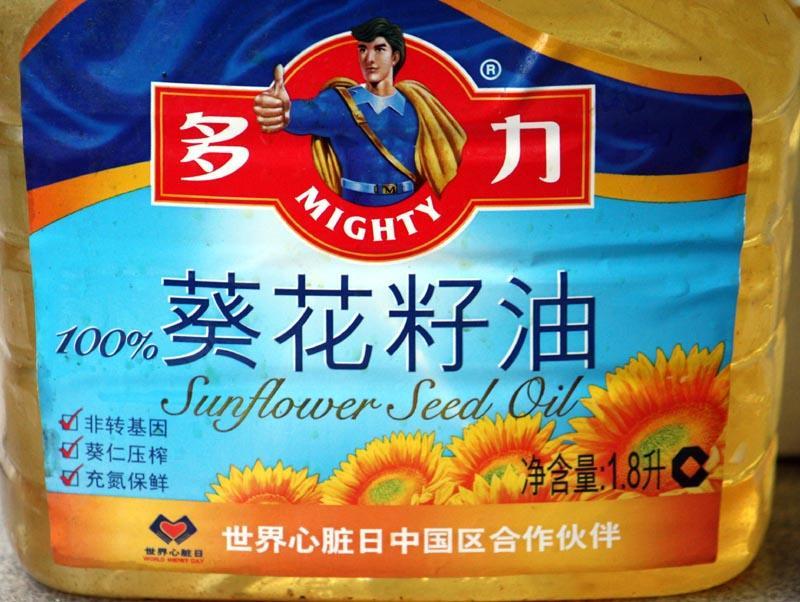
Sunflower oil – 葵花(籽)油 - kuí huā (zǐ) yóu
Soybean oil – 豆油 - dòu yóu
My default oil is is rice bran oil – 米糠油 (mǐ kāng yóu) or 稻米油 (dào mǐ yóu).
Rice Bran Oil - dào mǐ yóu
All these oils are valued for their supposed neutral taste and high smoke point which makes them ideal for stir frying. I say 'supposed' because I can always taste the peanuts in peanut oil. I hate eggs fried in peanut oil.
Relatively common is 食用调味油 (shí yòng tiáo wèi yóu) literally 'food grade dressing oil'. This is often labelled in English as Blended Oil, Vegetable Oil or Salad Oil. I never buy it. I prefer to know what I am eating. It tends to be the cheapest oil and is largely based on rapeseed oil (canola) but basically contains whatever was cheapest or had to be used up that week.
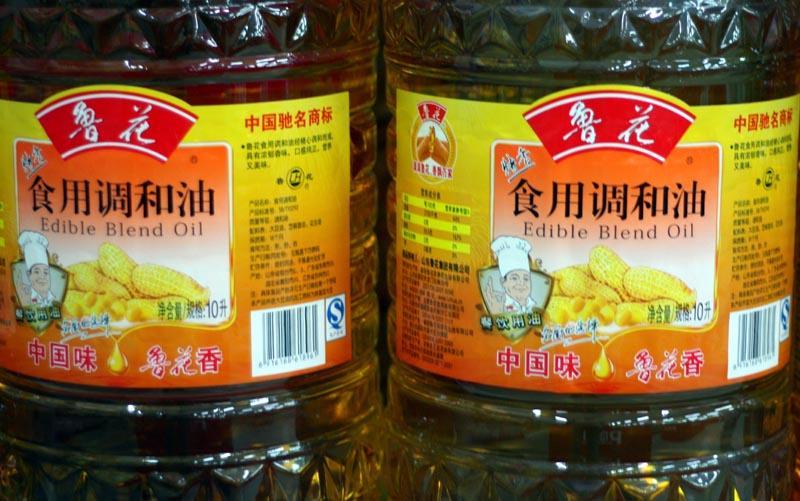
Blended Vegetable Oil
I have deliberately not given prices for any of these oils. Prices vary dramatically, even within one store. I suppose the price reflects the quality – first pressing vs second pressing etc – but I wouldn't guarantee it.
Occasionally, you do get specific blends – a common one is sunflower and olive oil – 橄榄葵花油 - gǎn lǎn kuí huā yóu.

Sunflower and Olive Oil (right)
Which brings me to a problem area. On August, 23rd 2005, for the first time ever, I found olive oil (S: 橄榄油; T: 橄欖油 - gǎn lǎn yóu) in Liuzhou. I only know the date because I rushed home with my oil and took a celebratory picture of me holding the bottle. The picture's embedded information includes the date. No. I'm not posting that picture here, but it was this.
Today, olive oil is in every decently sized supermarket and also in some independent places. The problem is no one really knows what it is. I get infuriated when I'm in the supermarket and some 'assistant' wakes up long enough to start recommending different bottles to me. She hasn't a clue and has probably never actually tasted the stuff.
I've never come across any good olive oil in a supermarket. They are industrially produced oils rather than artisan oils. The most common brand in Liuzhou is Olivilà, which sounds suitably Spanish. It is also labelled 'Mediterranean' which means nothing in this context. It's a blended oil and the Spanish sounding brand is actually part of Singapore registered Wilmar International Limited, the world's largest edible oil company. The company has also been named by Newsweek as the world's worst company because of its record of human rights abuses and environmentally damaging practices.

Arawana Logo – 金龙鱼 - jīn lóng yú
In fact, nearly all oils in the supermarket come from this company. The ubiquitous Arawana (above) brand of oils is one of theirs.
Another giant is the Chinese company, 多力油 which uses the English brand name "Mighty". I tend to go more for their oils, although no oil company is perfect.

Mighty Oils – 多力油 - duō lì yóu
Another problem with olive oil here is the pricing. It seems totally random. The supermarket people don't know the difference between 'extra-virgin olive oil', 'pure olive oil' and just 'olive oil', never mind 'stone-ground', 'cold-pressed' or 'first pressing'. They (over-)charge pretty much the same for them all. Plain 'olive oil' should be a lot cheaper than 'extra-virgin' and 'pure' somewhere in-between. Most EV oils are around 100元 for 750ml, but I've seen them go up to 500元 for lower quality oils. Ridiculous.
The only olive oil I buy now is this which I buy online. It's not the greatest in the world, but acceptable.
NOTE: Olive oil is not suitable for Chinese cookery. It has too low a smoke point and would be scorched in a stir-fry; downright nasty in a deep fry. Keep it for salads. Most of my Chinese friends seem to use it as a skin conditioner!
Other oils for cooking include imported grapeseed oil which has a relatively high smoke point (216 °C), making it suitable for the high temperatures of wok cooking or deep frying. It is a by-product of the wine making industry.
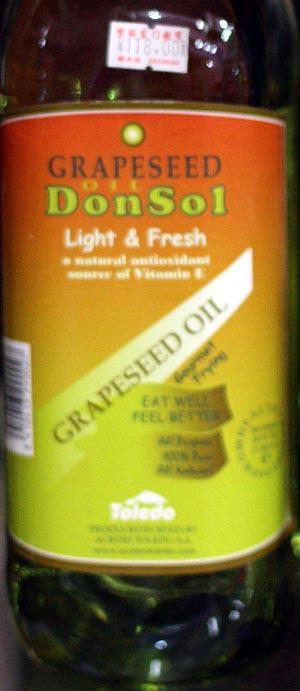
Despite its popularity in western countries, and despite the abundance of rape fields here, rape seed oil or canola is not common in Liuzhou. I see it occasionally in supermarkets but a careful trawl through most of them this week found none. In other parts of China, it's ubiquitous.
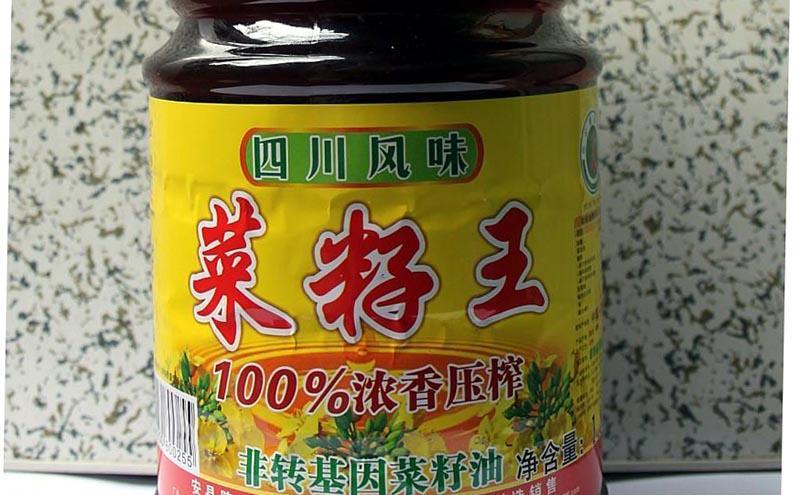
Rapeseed Oil / Canola - 菜籽油 - càI zǐ yóu
Others include camelia oil, widely used in Hunan, but less so here. Known in Chinese as 山茶油 - shān chá yóu, it has a very high smokepoint and is neutral in taste. It is available in Liuzhou supermarkets, but can be pricey.
.jpg.ea00b4a351f93f480f874eeff6d3635d.jpg)
Camellia Oil - 山茶油- shān chá yóu
A relatively recent arrival is avocado oil, but then so are avocados. Again, this is imported and expensive.
Finally, for now, we have perilla oil –紫苏油 - zǐ sū yóu. It too has a high smoke point and a slightly herbal flavour. It is, however, more prized for its supposed health benefits. Perilla oil is a very rich source of the omega-3 fatty acid alpha-linolenic acid (ALA). About 50 to 60% of the oil consists of ALA. It isn't very common in Liuzhou (it's more popular in Korea), but it's around.
Perilla Oil –紫苏油 (zǐ sū yóu)
Next tme, I plan to deal with what I call condiment or finishing oils.
-
 1
1
-
-
1 hour ago, ElsieD said:
I had no problems reading menus. That was, after all, the most important thing!
Indeed. When I moved to China, 28 years ago this week, the first thing I taught myself to read was 菜单, menus!
-
 4
4
-
-
-
Reading through the old entries here, I came across the much-missed Anna N's question about Laoganma and the ensuing conversation which I had forgotten.
The product in question was Laoganma Chicken Chilli and people were doubting that it actually contained any chicken despite it being listed in the ingredients (albeit in Chinese).
I was surprised at the time not by the chicken but by the doubters, although for some reason I didn't say anything.
The reason for my surprise was that jarred meat containing products such as that are quite common here. This one is typical.
S: 香菇牛肉酱; T: 香菇牛肉醬 (xiāng gū niú ròu jiàng) has been translated by the producers as 'mushroom and beef paste' but 'shiitake and beef sauce' would be more accurate.
Like Anna's Laoganma chicken and chilli, it is usually spooned over rice or noodles as a snack or quick meal. Not used as a condiment so much.
Ingredients are listed as vegetable oil, shiitake, chilli, eryngii mushrooms, fermented black beans, soybean protein, broad beans, beef, salt, ginger, garlic, msg, sugar, sesame, konjac powder, spices and a handful of preservatives whose names are longer than I can be bothered to type.
Three serving suggestions given are: with meals, over mixed noodles or with bread.
I have no idea how available this brand may be but Asian markets probably have similar preparations.
-
 2
2
-
-
China's premium vinegars are all black varieties. These are smoky and have complex flavours. Yet, they are quite distinct from each other.

Most common within China is Shanxi Mature Aged Vinegar, S: 山西陈醋; T: 山西陳醋 (shān xī chén cù). This vinegar from Shanxi province in east-central China is unique among China's vinegars in that it does not include rice. Instead it is made from a mixture of sorghum, wheat, barley and peas.
The area has been associated with vinegar for at least 2,500 years, but the type still available went into production in 1368.
Shanxi vinegar is aged for a minimum of one year, although most found in supermarkets is aged three years. A five year premium version is made in limited quantities.
This vinegar seems to be difficult to source in the west, although at time of writing Amazon is stocking some.
If you can't find it, don't despair. The ultimate in Chinese black vinegars is thankfully more widely available.
Zhenjiang Vinegar, S: 镇江香醋; T: 鎮江香醋 (zhèn jiāng xiāng cù) is widely considered to be the peak of the Chinese vinegar making arts. It is often sold in America under the prehistoric transliteration Chinkiang vinegar, a term unknown in China.
This is a geographically protected product of Zhenjiang city in Jiangsu province near Shanghai, where they've been making it for over 1,400 years.
Zhenjiang is made from predominantly rice but with some wheat and barley also included.

Least well known, even within China, is Sichuan Baoning Vinegar, S: 四川保宁醋; T: 四川保寧醋 (sì chuān bǎo níng cù). Made in Baoning, Sichuan since 1618, this is mainly wheat bran based but also contains a wide mixture of 'medicinal' herbs giving it a unique flavour. This is my go to general vinegar of choice.
You may come across vinegars simply labelled as Chinese black vinegar; I suggest you stay clear unless you are very sure what they are and where they're from. The above listed all include their provenance proudly on their labels.
These vinegars are used in dips for dumplings, especially xiao long bao. Black vinegar is used to dress noodle dishes. It goes particularly well with braised pork dishes. I always add it to steamed fish. I once ate a wonderful braised chicken dish with Zhenjiang vinegar, the recipe for which I'm still trying to wrest from the cook. The list is endless. There are even those who just drink the stuff!
Finally, many sources suggest that balsamic vinegar makes a good substitute. I strongly disagree. The only similarity is that they are both black. The flavours and textures are wildly different.
-
 1
1
-
-
Simp: 大红; Trad; 大紅 (dà hóng) literally 'big red' means 'crimson', the most valued shade of red, the most important and propitious colour in Chinese culture.
Zhang Yimou's stunning 1991 movie Raise the Red Lantern is Simp: 大红灯笼高高挂; Trad: 大紅燈籠高高掛 (dà hóng dēng lóng gāo gāo guà) in Chinese - if you haven't already, I suggest you see it.
Simp: 大红浙醋; Trad: 大紅浙醋 (dà hóng zhè cù) is less stunning, but still one of my favourites. An alternative name is Simp: 浙江红醋; Trad: 浙江紅醋 (zhè jiāng hóng cù) Both are red rice vinegar, the least well known Chinese vinegar.

This is made from Simp: 红曲米; Trad: 紅麴米 (hóng qū mǐ), a type of rice infected with a yeast, monascus purpureus which colours it red.
This is a mild vinegar which pairs particularly well with fish and seafood. It is also used with Cantonese roast pigeon.
I like it as a dip with shrimp and with sashimi.
Western red wine vinegar is not a suitable substitute
Next: The best - the Black Vinegars
-
 1
1
-
-
Different Chinese vinegars have popped up in a variety of topics throughout these forums but I feel that bringing them together here would be useful.
Vinegar is an important aspect of Chinese cuisine which I think is often overlooked in the West.
Indeed, vinegar, 醋 (cù), is an important aspect of Chinese life, being referenced in multiple idioms. S: 柴米油盐酱醋茶; T: 柴米油鹽醬醋茶 (chái mǐ yóu yán jiàng cù chá) is a well known example literally meaning 'firewood, rice, oil, salt, soy, vinegar, and tea' but figuratively 'life's daily necessities'.
Vinegar features in many dishes and dips and vinegary pickles are ubiquitous in the cuisine from vegetables and fruits through to fish and meats.
I'll start with the most basic vinegar, 白醋 (bái cù) or 白米醋 (báI mǐ cù), 'white vinegar' or 'white rice vinegar'. Despite the two names, these are the same thing. And despite the 'white' can range from clear to pale yellow in colour.
This is widely available and cheap. (Here in China the cheapest even comes in bags. Not recommended.)
This vinegar is milder than most western vinegars and and is slightly sweet. It is used for most pickles, both the quick and the slow.
Some versions are labelled 'seasoned'. These usually have added salt and sugar. The plain is the only one I buy; ingredients are simply glutinous rice and water.
White rice vinegar is used in a few dishes such as Stir-fried Potato Slivers.
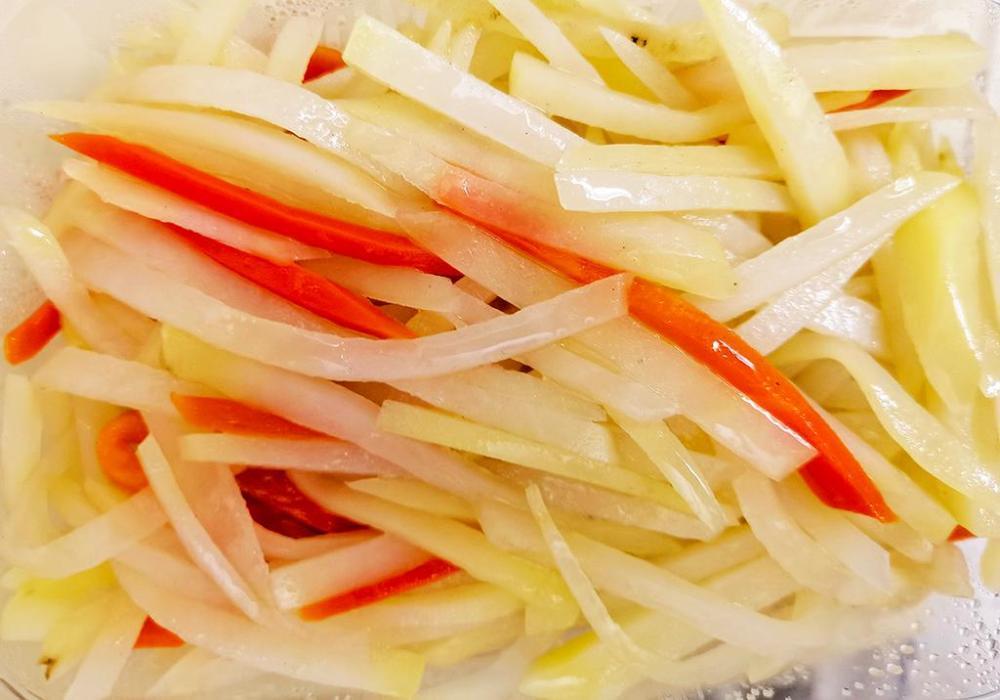
It is also used in sweet and sour (糖醋 - táng cù, literally 'sugar vinegar') dishes as well as some dips.
It is now also my go to vinegar for western vinaigrettes etc.
Next: Red Rice Vinegar
-
 1
1
-
-
I've spent most of my adult life in countries whose languages were not mine. Never really had a problem. Never starved. Pointing is a great invention.
Shopping in supermarkets often helps as you can see what many things are and aren't normally required to speak.
Countries which use European languages tend to be a bit easier. At least platanos nachos looks and even sounds a bit recognisable. It's when you are up against non-Latin scripts it really gets tricky.
When all that's on offer is some 鸡肉 or કૂકડો or ไก่, then you're in trouble!
Most translation apps are now good enough to handle this sort of situation.
-
 3
3
-
-
It is mainly used in the broths for hot pot and the dried version is much more common.
In fact, apart from some TCM uses, I don't know any other way it's used. It appears in a number of these spice mixes for hotpot, or I can buy it separately.
-
 1
1
-
-
29 minutes ago, KennethT said:
I may have asked this before in another place, but have you ever seen sand ginger used or sold fresh as you would ginger? To my knowledge, one of the few cuisines that uses fresh sand ginger (kaempferia galanga) is Indonesia - there called kencur (kehn choor).
Yes. I can buy fresh sand ginger easily. And I've used it.
-
 1
1
-
-
One of the unanswered questions concerned salt with members wondering what types of salt are used, if any.
While a lot of Chinese cuisine's salt content is derived from soy and other sauces, salt is most certainly also used. What types? The same as anywhere else.
Refined table salt (S: 咸盐 T: 鹹鹽 - xián yán) with additives to enable easy pouring is most common. Available everywhere.
Refined salt
Locally sourced sea salt (S: 海盐; T: 海鹽- hǎi yán) is also widely available in most supermarkets.
I often buy this low sodium salt (S: 低钠盐; T: 低鈉盐 - dī nà yán) in my local store.
and we even have English Maldon salt imported via Hong Kong. I forget the Chinese name.
The Himalayan pink salt (S: 喜马拉雅玫瑰盐; T: 喜馬拉雅玫瑰盐 - xǐ mǎ lā yǎ méi guī yán) scam is perpetuated here, too.
All in all nothing much to say about salt.
-
 1
1
-



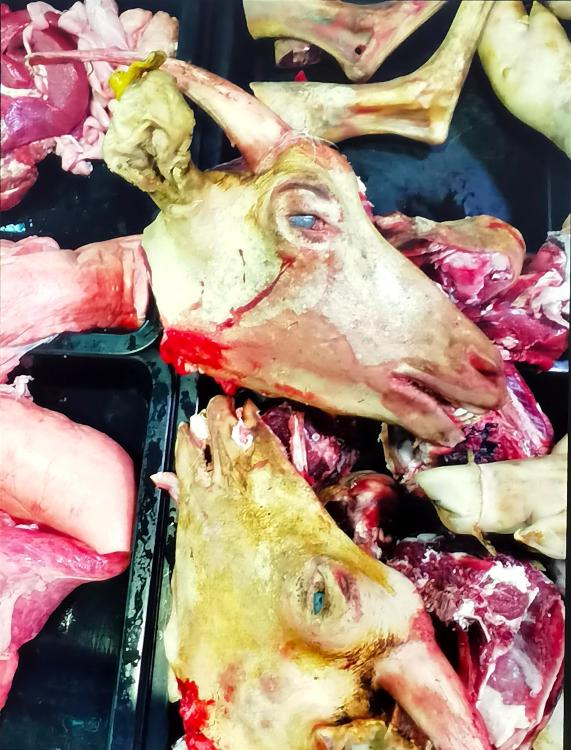
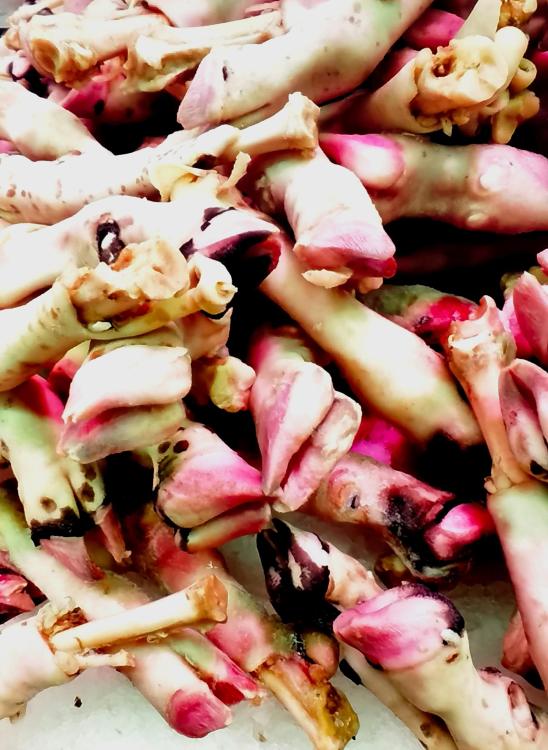

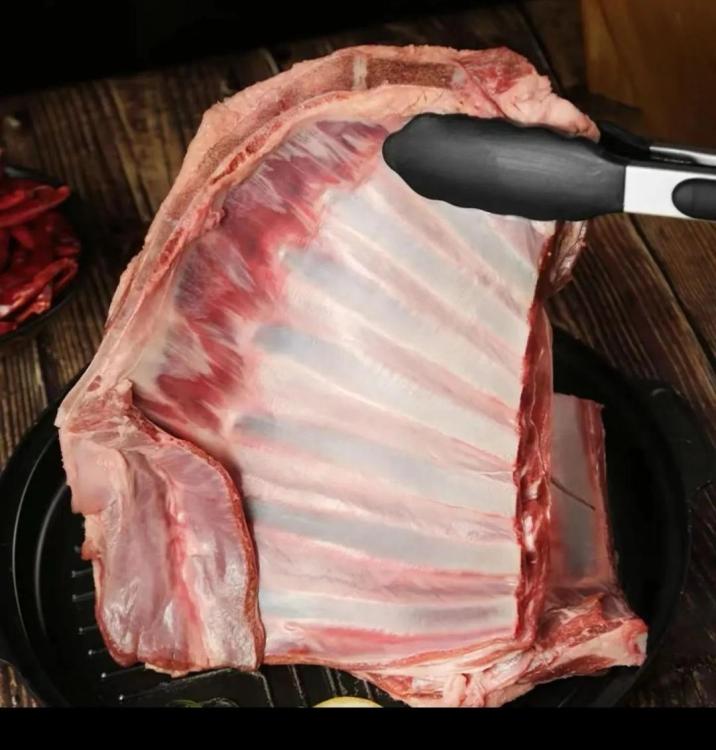
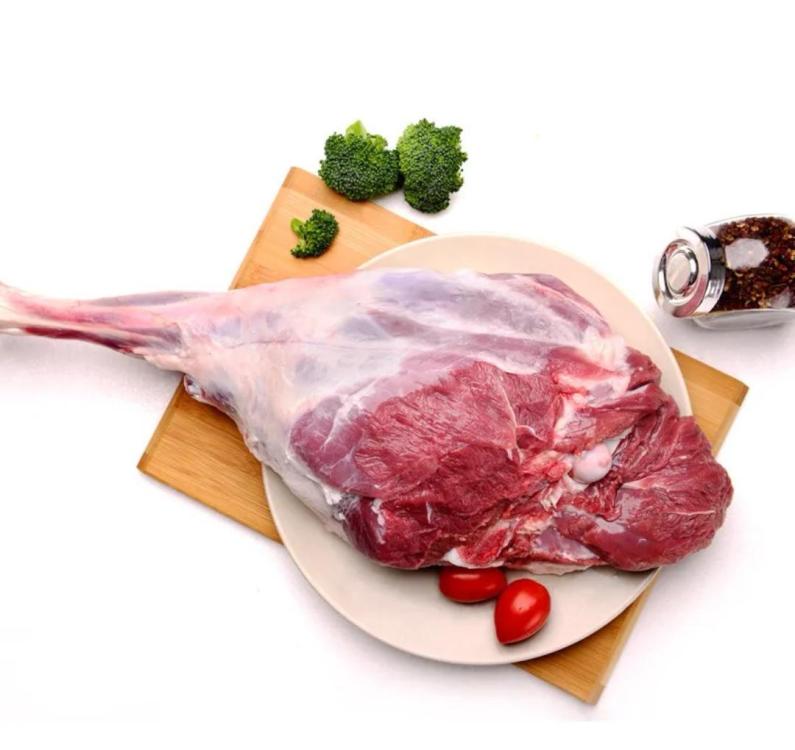
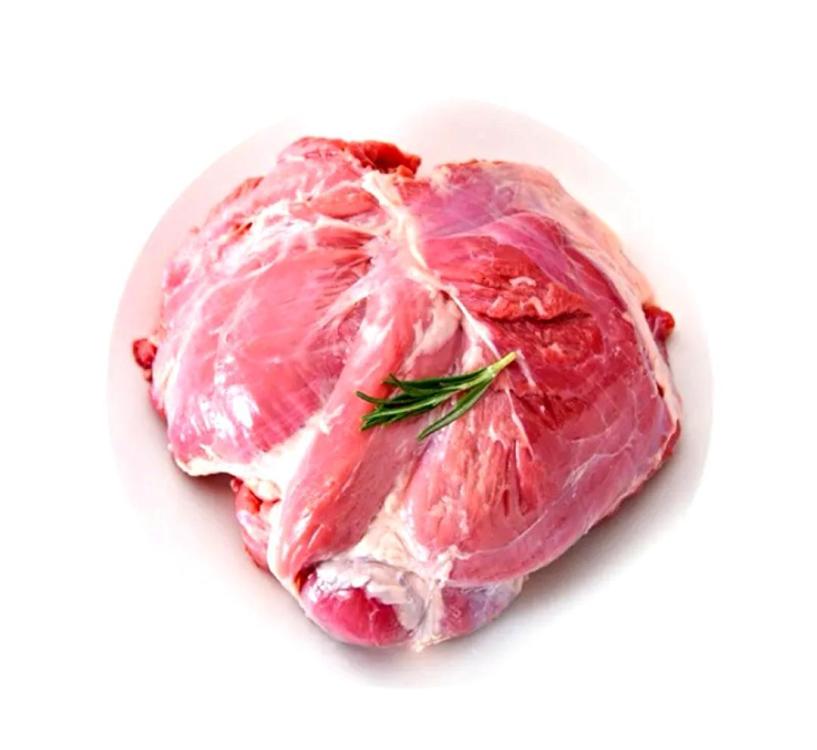
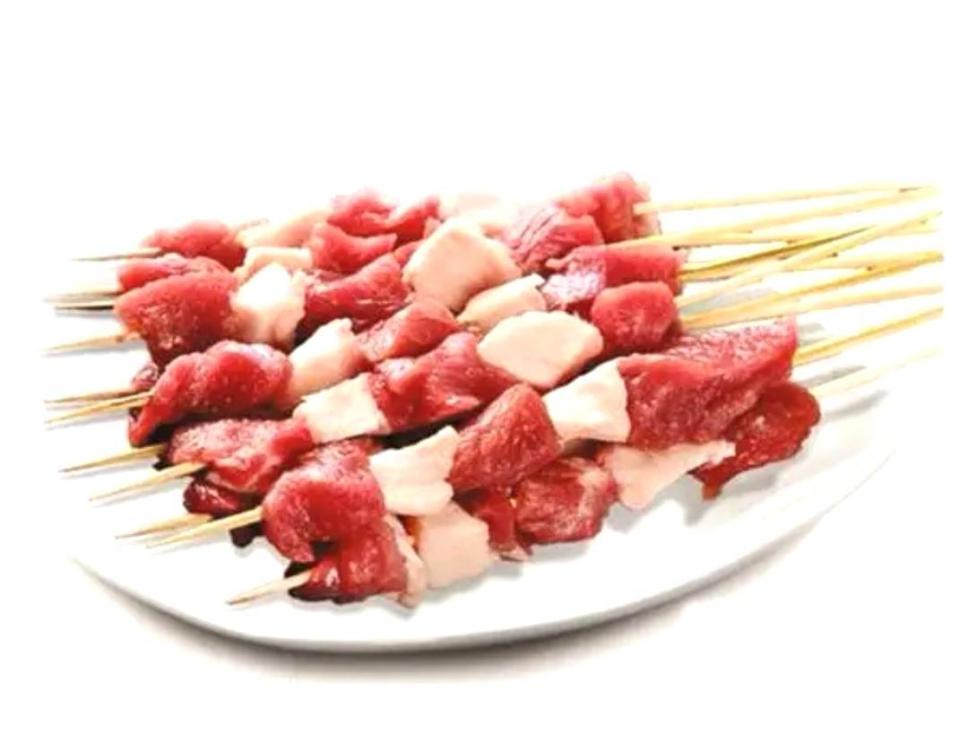
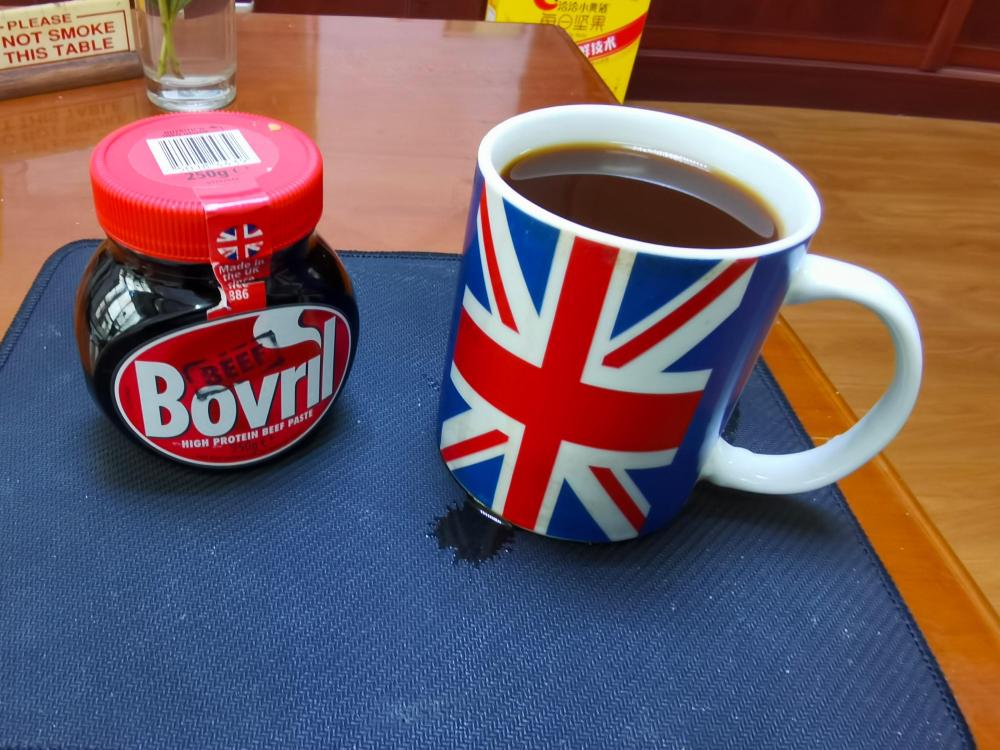
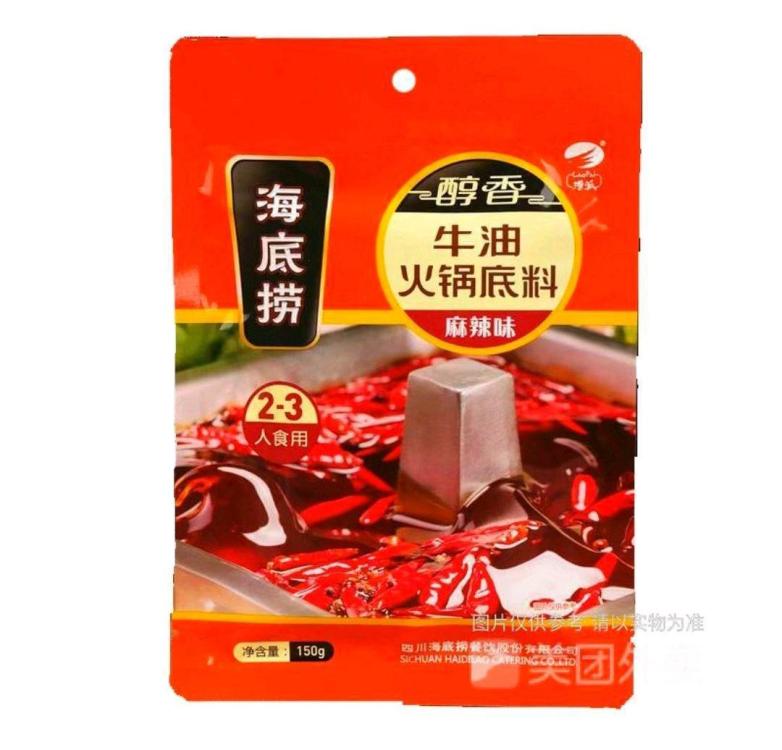
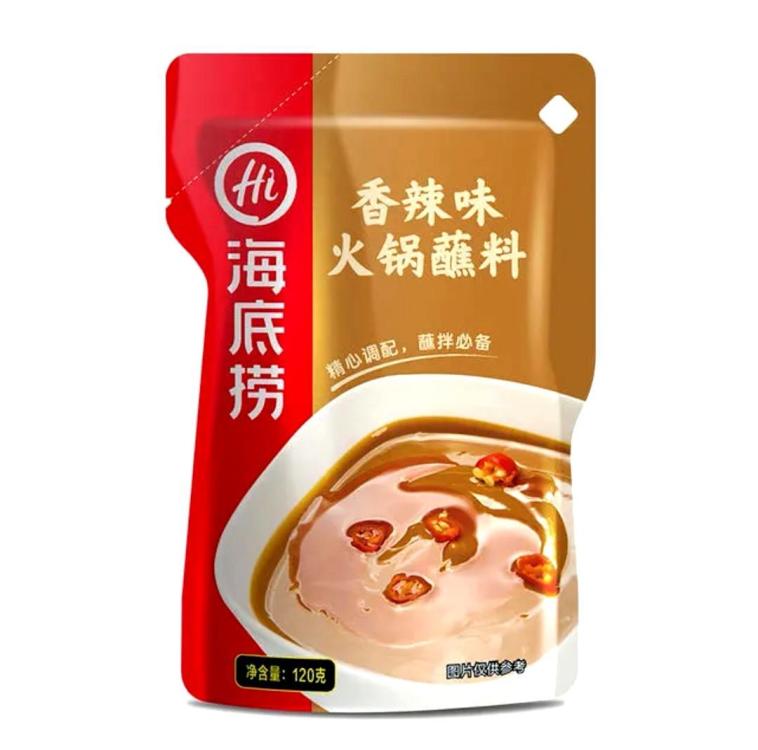
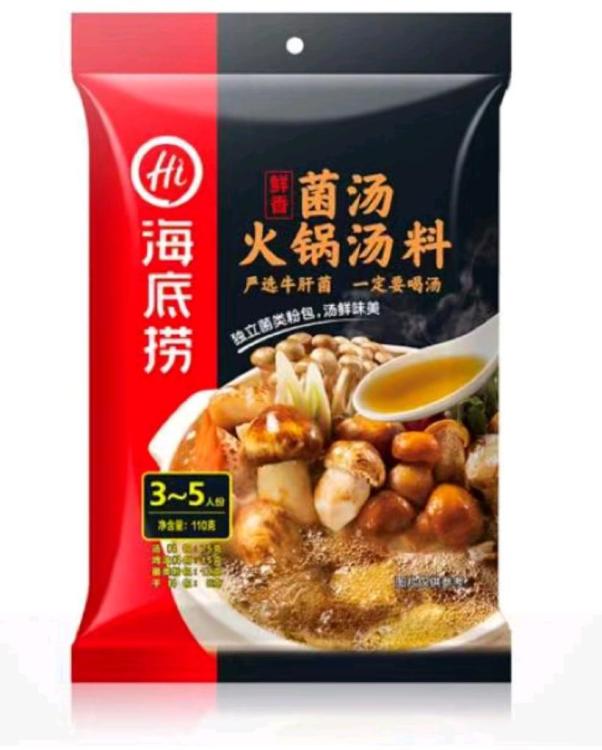
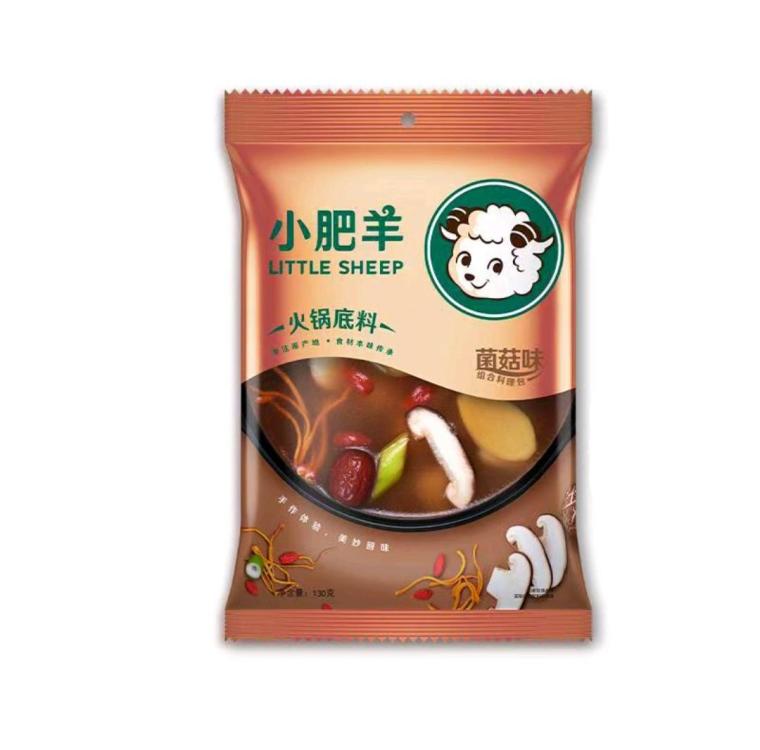

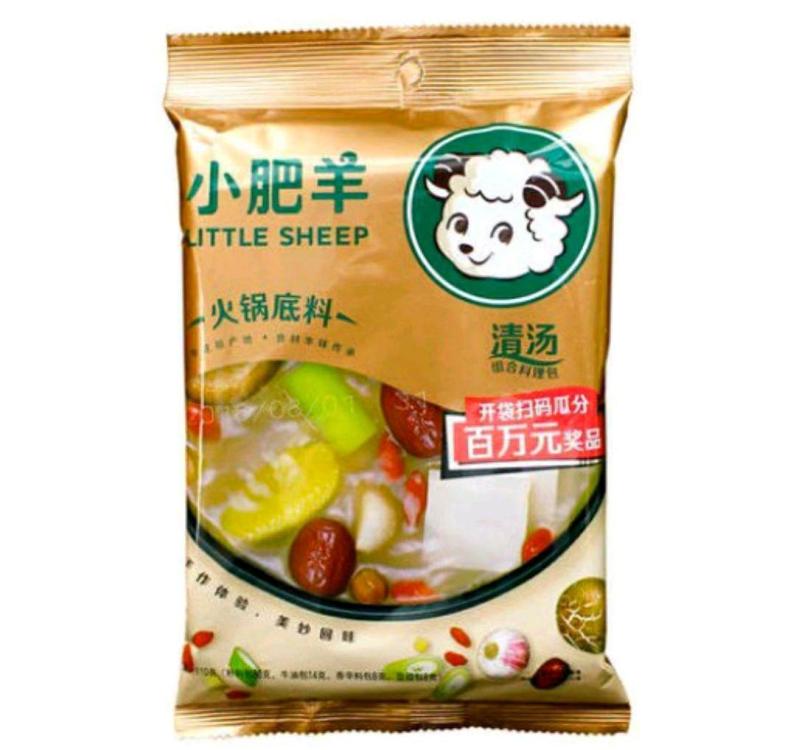

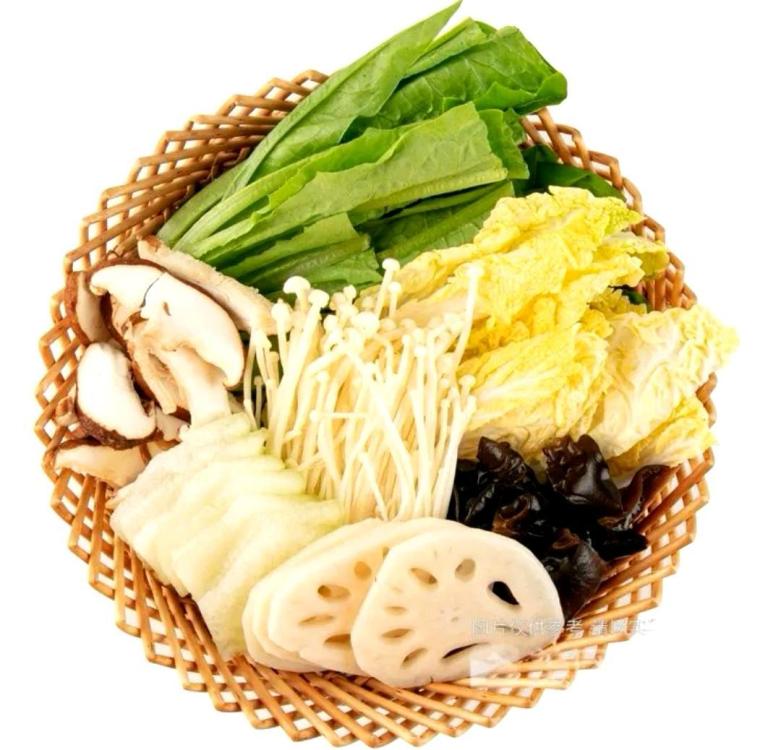
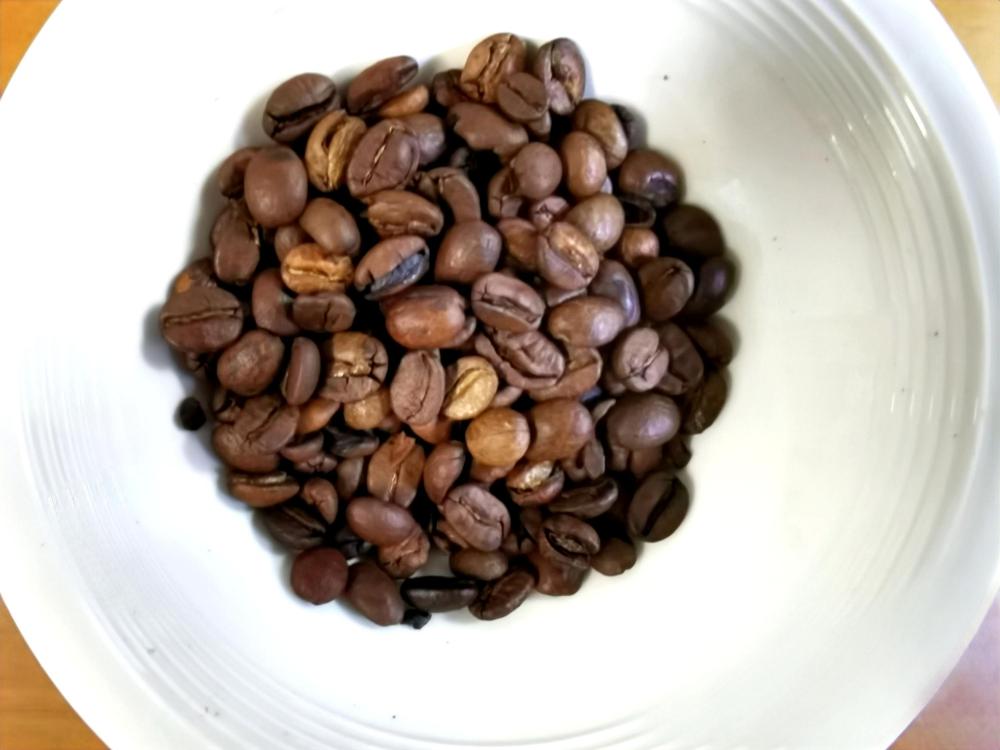


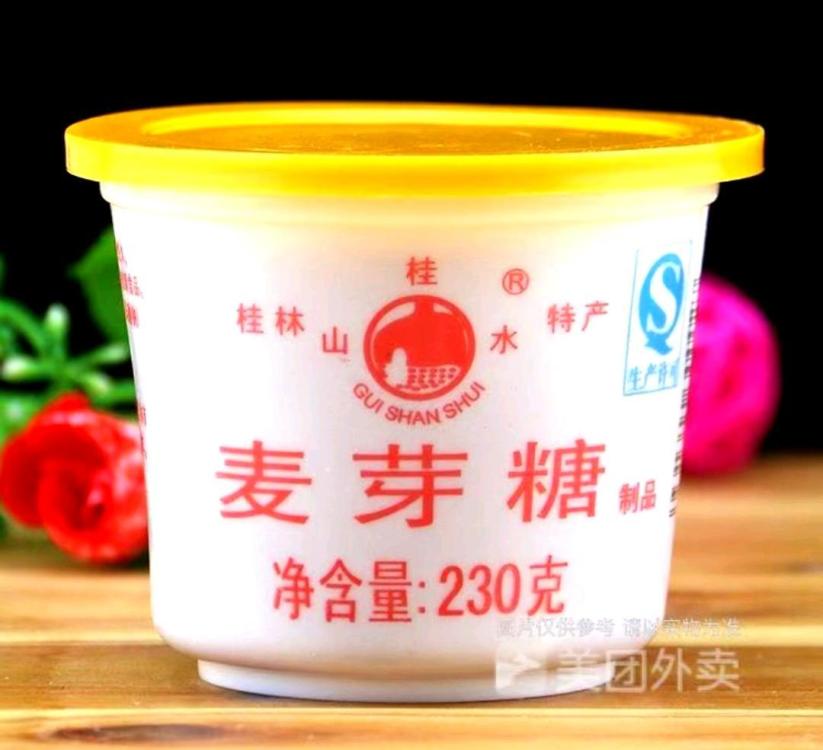
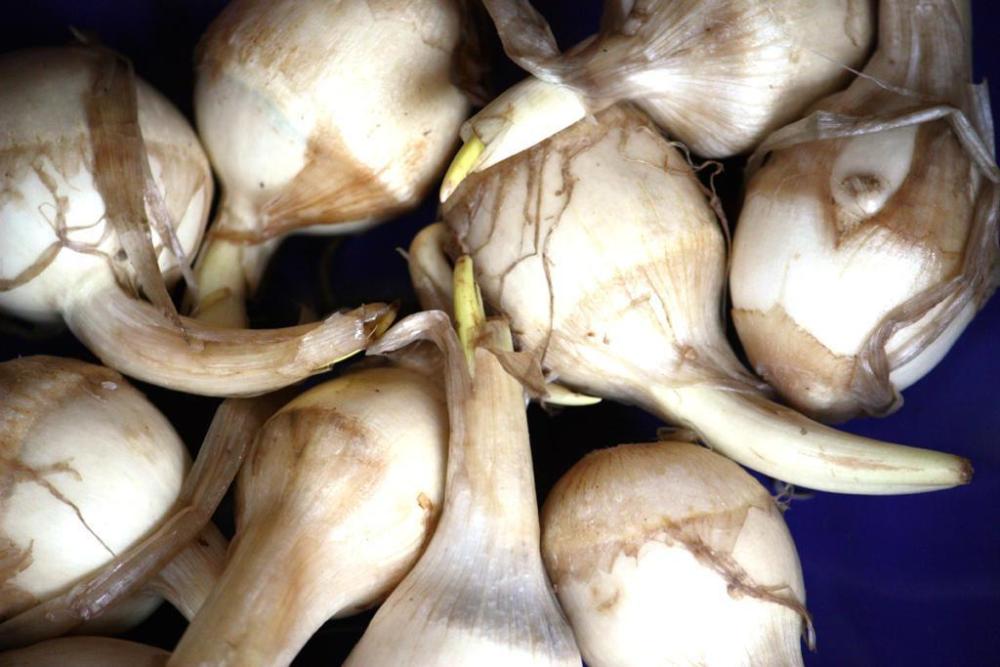
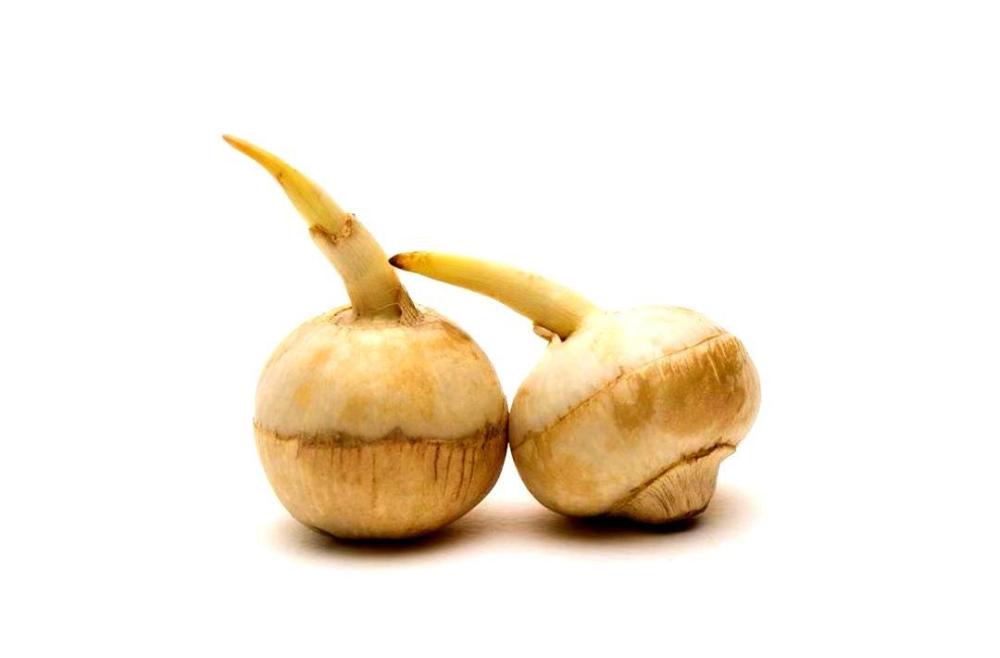
.thumb.jpg.a6e7f966827f4a1e09524b83701a5e83.jpg)
.thumb.jpg.9410f6691159a08d127d59e591e8b012.jpg)
.thumb.jpg.0a0f6e7ebc2765b582a48e49304a2cf2.jpg)
.thumb.jpg.297d8e786aa26b0d2034c6e94c1d6698.jpg)
.thumb.jpg.0652788eaed6a78c2f749220bbffcc54.jpg)
.thumb.jpg.1403bc59b30479e15bc1dd2347d84715.jpg)
.thumb.jpg.1acf7337eecffb5101f9ef09242dbb19.jpg)
.thumb.jpg.cff266ae7872346831e0b7b8d0b5291c.jpg)
.thumb.jpg.7e587be8d63a30020124bb506d805899.jpg)




.thumb.jpg.e6e373f10b3d2af801e18b9e490508f7.jpg)
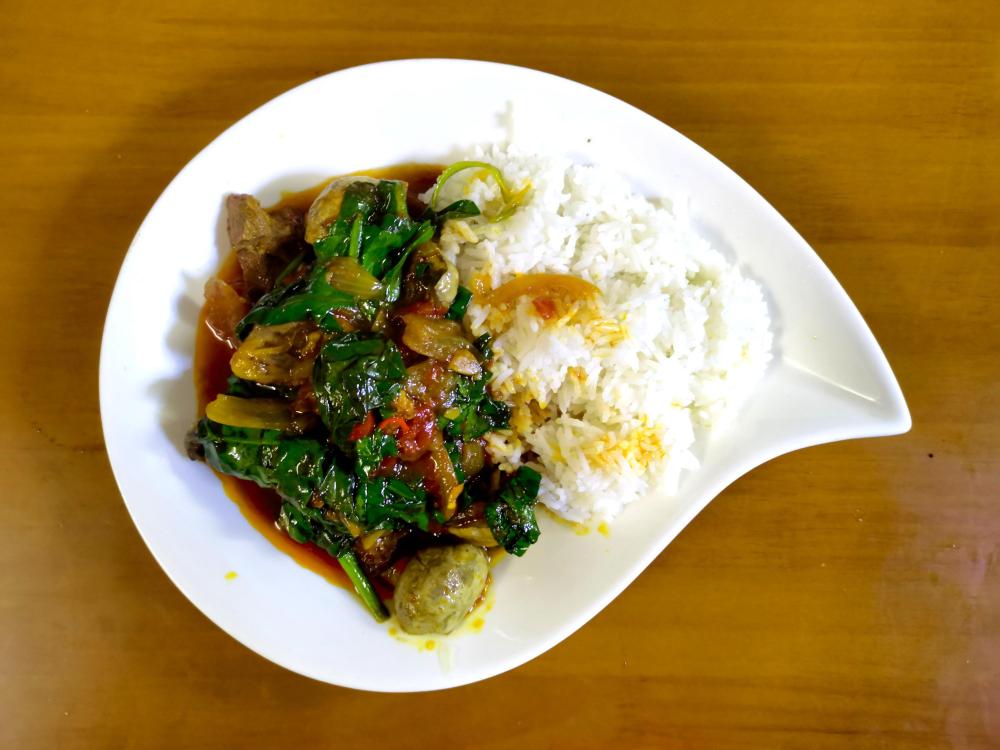

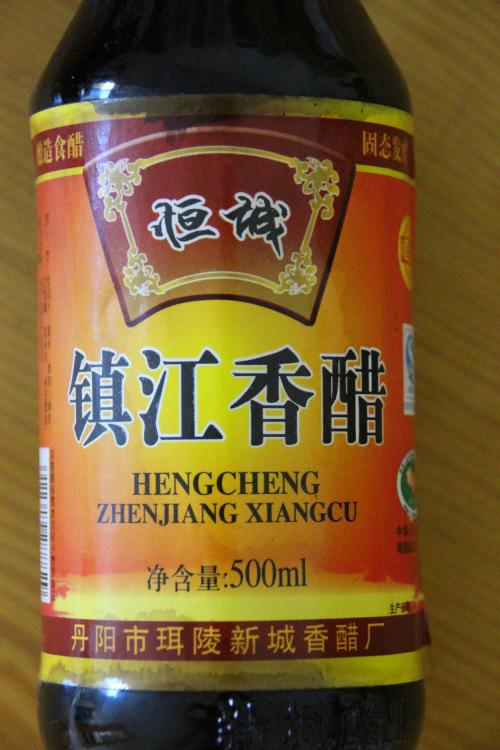
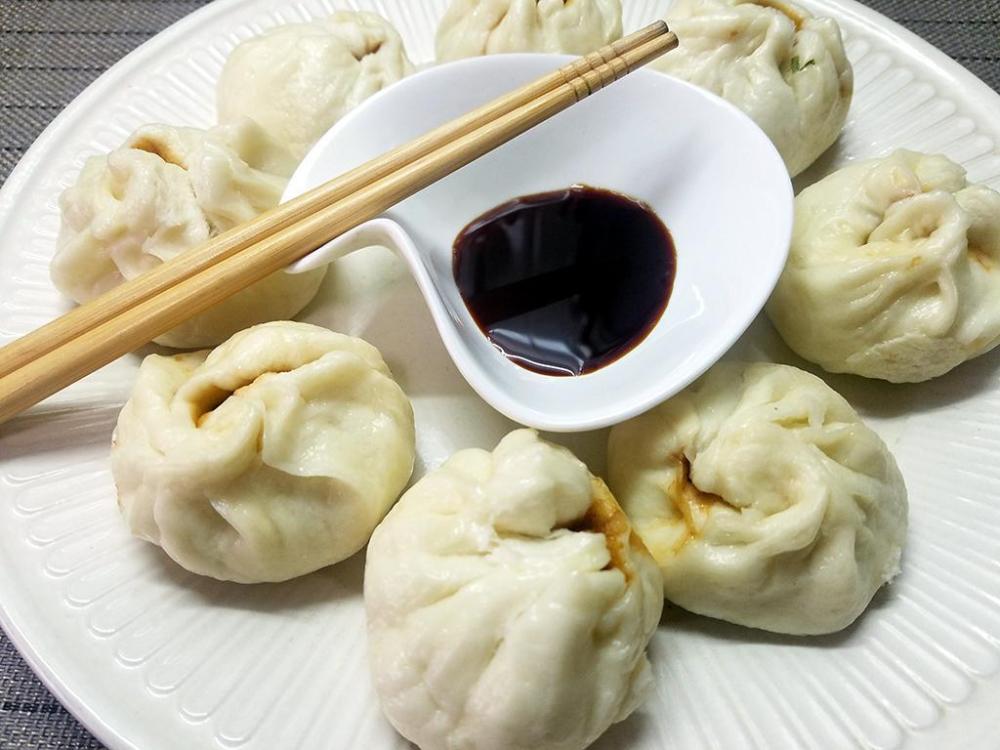


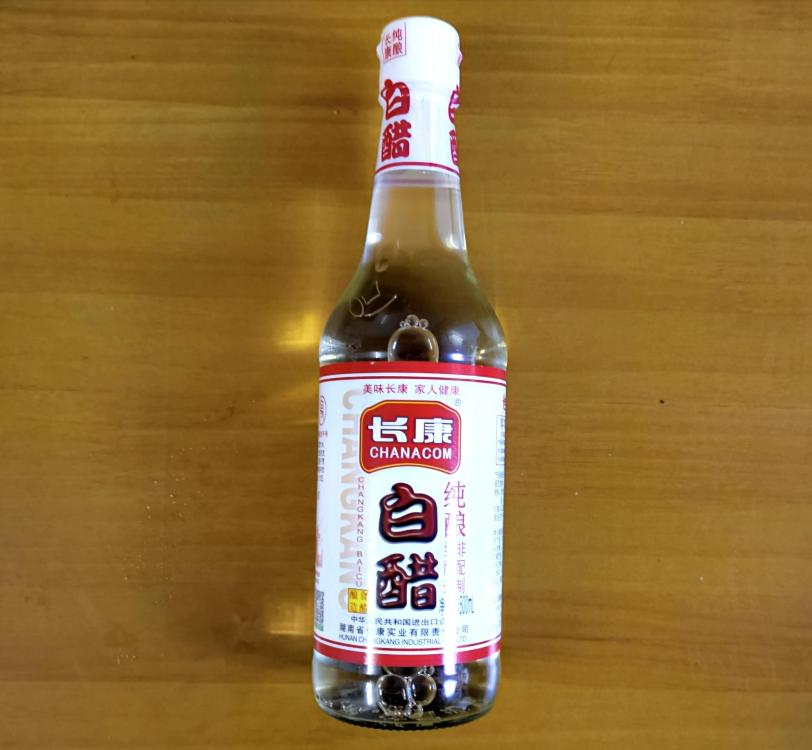
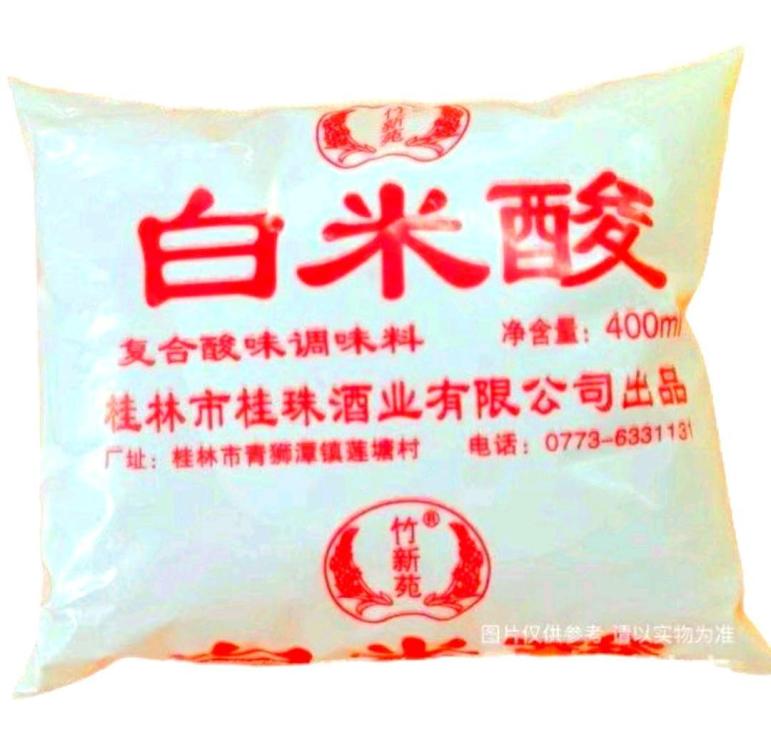
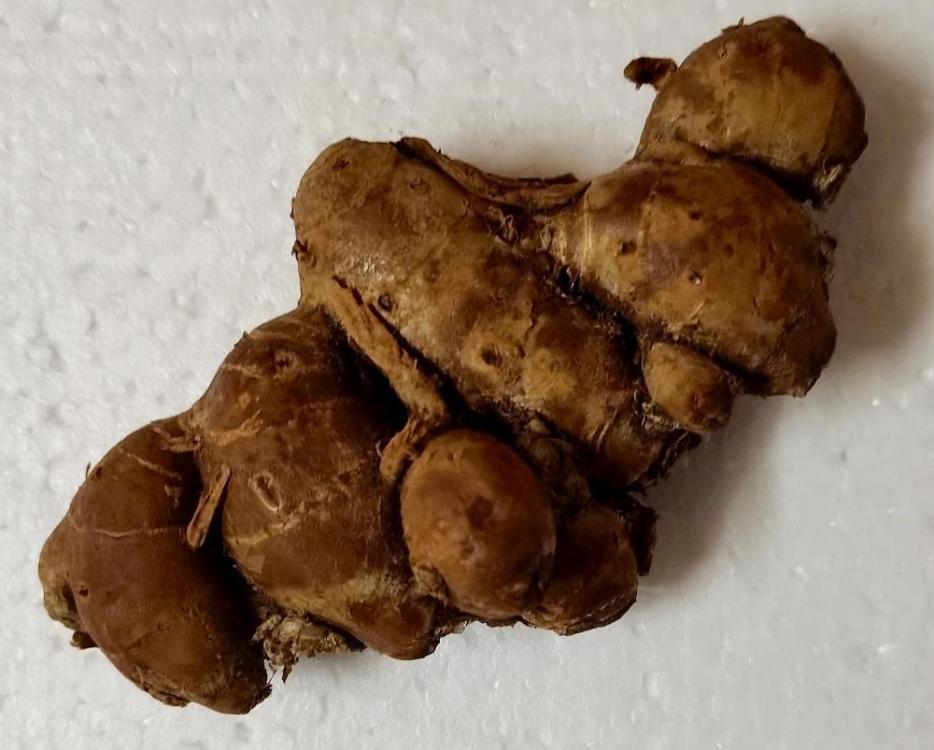
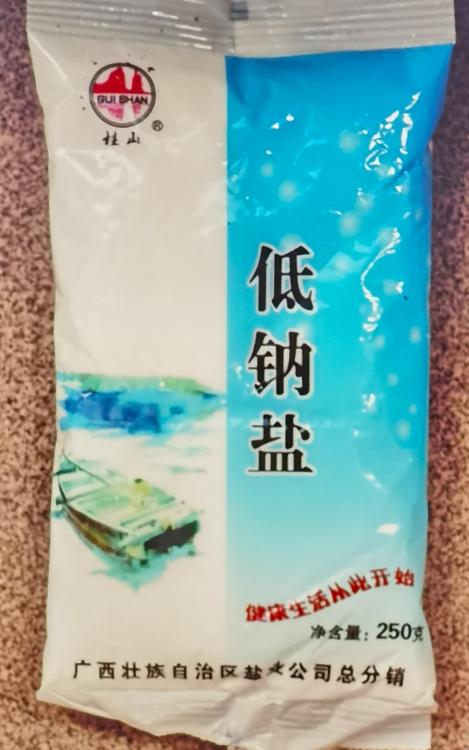
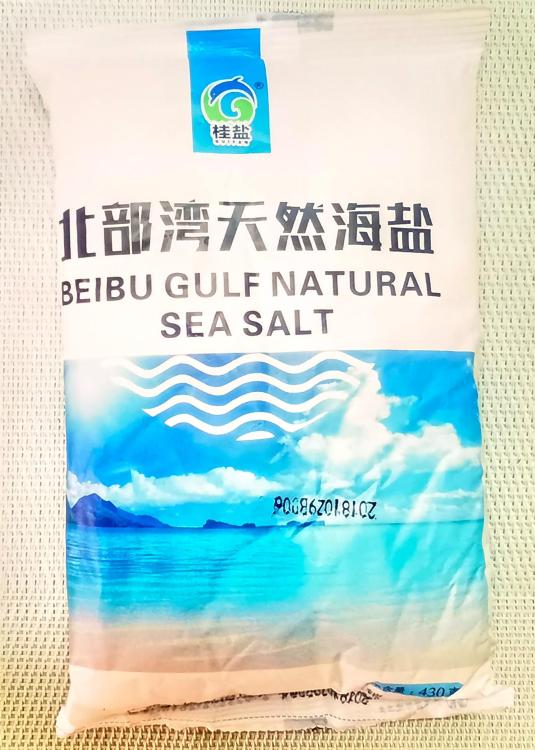
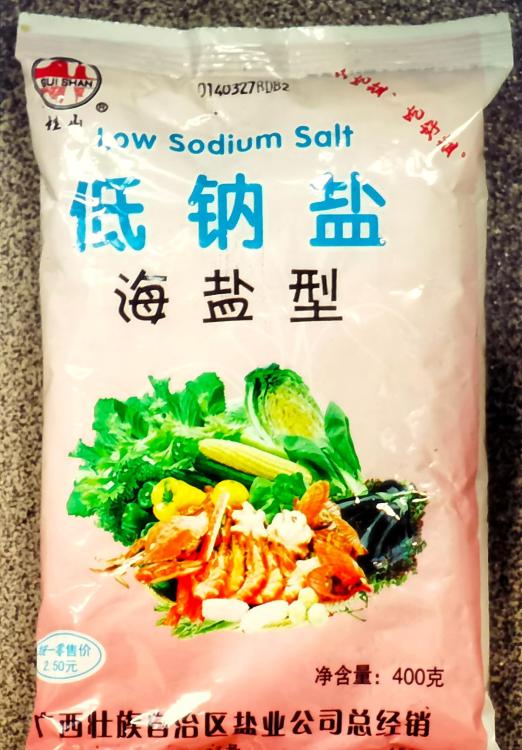
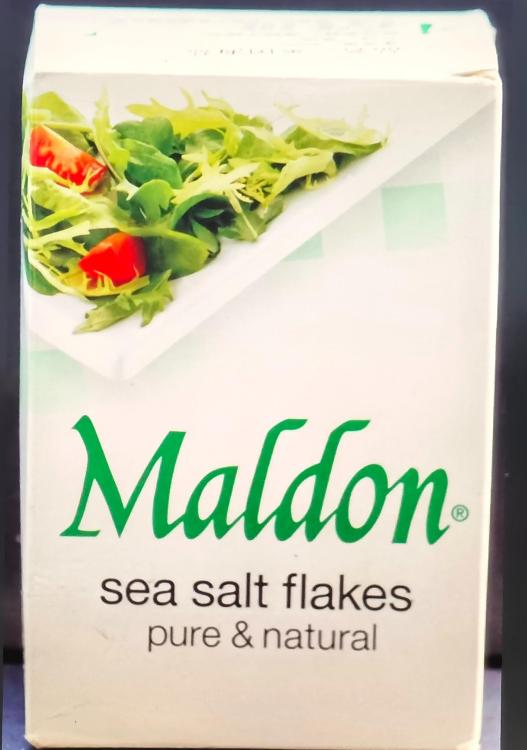
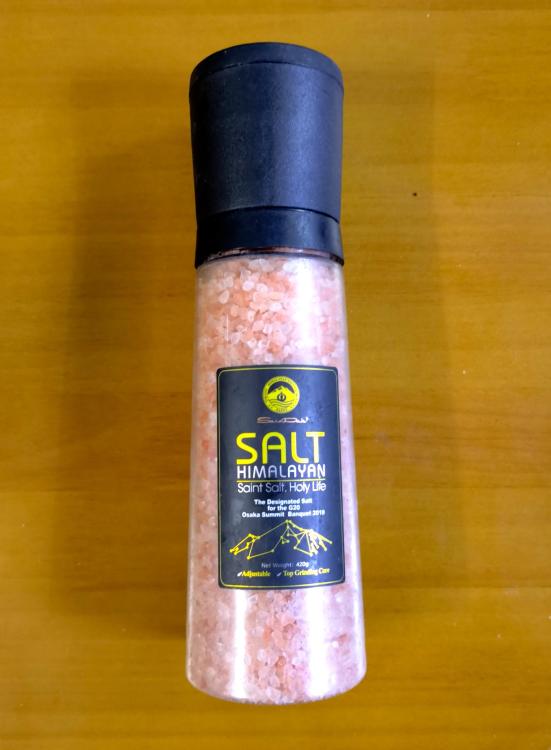
Yunnan Coffee
in Coffee & Tea
Posted
I'm not sure but I suspect not. Having read this
https://coffeebrewster.com/best-coffee-beans/peaberry-coffee/#:~:text=Peaberry coffee is a natural mutation in arabica,snail. Coffee beans come from the coffee cherry.
I have to say they don't match the description of being rounder and nor are they particularly expensive.